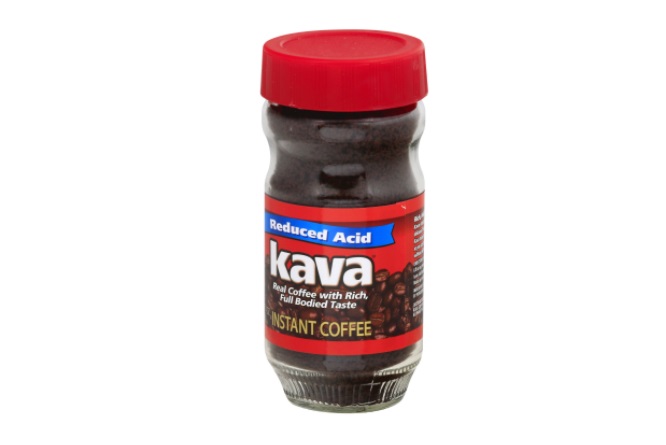
Have you ever sipped a cup of coffee and felt that unwelcome pang of acidity? You’re not alone. Low-acid coffee emerges as a hero for many, especially those with a sensitive stomach. It’s not just about dodging the discomfort; it’s about savoring every cup without the worry. Low-acid coffee, as the name suggests, is less acidic, offering a smoother, milder experience. Whether you’re dealing with digestive issues or simply seeking a more pleasant morning brew, this coffee variant could be your new best friend.
Key Takeaways
- Gentler on the Stomach: If traditional coffee leaves you with a sour stomach, low-acid coffee is your go-to. It’s crafted to be kinder on your digestive system, reducing chances of heartburn or discomfort.
- Rich Flavor, Less Burn: Don’t think you’re compromising on taste. Low-acid coffee still packs a flavorful punch, just without the acidic bite.
- Better for Oral Health: Acidic beverages can be tough on your teeth. A lower acid content means a happier smile.
- Inclusive Choice: Whether you have specific health concerns or you’re just curious, low-acid coffee is a great option for a wide range of coffee enthusiasts.
- Versatile Brewing: From cold brews to espressos, low-acid coffee can be brewed in various ways to suit your preference.
Understanding Low Acid Coffee
Low-acid coffee is not just a buzzword; it’s a game-changer for many coffee lovers. Let’s break down what this term really means and why it might be the brew you’ve been searching for.
What is Low Acid Coffee?
Low-acid coffee is exactly what it sounds like: coffee that’s specially processed or sourced to have a lower acid content compared to regular coffee. This doesn’t mean it’s completely acid-free, but it’s significantly gentler, especially for those with sensitive stomachs or acid reflux issues.
How is Low Acid Coffee Produced?
So, how do coffee producers achieve this lower acidity? There are a few methods:
- Bean Selection: It starts with the beans themselves. Certain coffee bean varieties and growing conditions naturally result in lower acidity. For instance, beans grown at lower elevations tend to be less acidic.
- Roasting Process: The way coffee is roasted can also impact its acidity. Darker roasts typically have lower acid levels than lighter roasts, as the roasting process breaks down more of the acidic compounds.
- Processing Techniques: Some brands use specific processing methods to reduce acidity, like slow roasting or using water processes that gently remove acidic components without sacrificing flavor.
Health Benefits
Switching to low-acid coffee can bring several health benefits, particularly if you’re sensitive to acidity. Here’s how it can make a difference:
- Digestive Comfort: Less acid means a happier stomach. If regular coffee causes you discomfort, low-acid varieties might be more your speed.
- Oral Health: Acidic foods and beverages can erode tooth enamel over time. Low-acid coffee is a kinder option for your teeth.
- Better Tolerance: For those with conditions like GERD or ulcers, low-acid coffee can be a more comfortable alternative that lets you enjoy coffee without the pain.
Popular Low Acid Coffee Brands
For those on the hunt for a gentler cup of joe, the world of low-acid coffee offers a variety of choices. Here’s a closer look at some leading brands that are making waves with their stomach-friendly brews.
Purity Coffee
Purity Coffee is a standout in the low-acid coffee scene, focusing on organic, single-origin beans that are as good for your health as they are for your taste buds. They pride themselves on sustainability and a chemical-free process that ensures a smooth, enjoyable cup every time. Customers rave about the rich, robust flavors without the usual acidic aftermath, making Purity Coffee a go-to for those seeking both quality and comfort.
Califia Farms
Not just a name in the world of plant-based milks, Califia Farms also offers low-acid coffee options that are turning heads. Their dark roast coffees and cold brews are crafted to be easy on the stomach while delivering the bold flavors coffee lovers crave. The Califia Farms cold brew is especially popular, offering a refreshing twist on the traditional coffee experience with a lower acid content that’s perfect for sensitive stomachs.
Fabula Coffee
Fabula Coffee takes the cake for those who prioritize both taste and digestibility. Their low-acid blends are not just gentle on the stomach but also free from pesticides, ensuring a clean, health-conscious cup. What sets Fabula apart is their commitment to small-batch roasting, which translates to a fresh, flavorful coffee experience every time. Users often highlight the smooth taste and noticeable lack of bitterness, making Fabula a favorite among those looking to switch to low-acid coffee.
Brewing Methods for Low Acid Coffee
When it comes to brewing your favorite low-acid coffee, the method you choose can have a significant impact on the final taste and acidity level. Here’s a breakdown of some popular brewing techniques that can help you get the most out of your low-acid beans.
Cold Brew: Cold brew coffee is a fantastic option for those looking to minimize acidity. This method involves steeping coffee grounds in cold water for an extended period, usually 12-24 hours. The result is a coffee concentrate that’s smooth, mellow, and notably less acidic than its hot-brewed counterparts. The slow extraction process ensures that the harsher acidic compounds are left behind, giving you a cup that’s easy on the stomach and full of flavor.
Espresso: You might be surprised to learn that espresso, despite its bold flavor, typically has less acidity than regular coffee. The key lies in the brewing time—espresso is brewed under high pressure for a very short period, which doesn’t allow much acid to be extracted. This results in a concentrated shot that’s rich and flavorful, with a lower acidity level than you’d find in a standard drip brew.
French Press: The French press, a beloved method among coffee enthusiasts, can be tweaked to reduce acidity. Opting for a coarser grind and a shorter brewing time can help limit acid extraction, giving you a full-bodied cup without the bite. Plus, using a French press allows you to control the brewing process closely, enabling you to find the perfect balance for your taste buds.
Drip Brewing: If you’re a fan of the classic drip coffee, you’re in luck—this method can also be adapted for lower acidity. Using a paper filter can help, as it captures more of the acidic compounds. Additionally, opting for a medium or dark roast and ensuring your water temperature is not too high can also help reduce the acidity in your final brew.
Where to Find Low Acid Coffee in Grocery Stores
Finding low-acid coffee at your local grocery store is easier than you might think. Start by checking the coffee aisle, where brands often highlight “low acid” on their packaging. If it’s not immediately visible, look for terms like “smooth,” “gentle,” or “stomach-friendly,” which can also indicate lower acidity.
Organic and natural food sections are other hotspots, as these areas tend to feature products catering to specific health needs, including low-acid coffee options. Don’t hesitate to ask a store employee for assistance—they can often point you in the right direction.
Low Acid Coffee and Dietary Considerations
If you’re integrating low-acid coffee into your diet, it’s good to know how it aligns with various dietary needs. For individuals managing conditions like GERD or acid reflux, low-acid coffee can be a game-changer, reducing symptoms and discomfort. It’s also a thoughtful choice for those with sensitive stomachs or who prefer a milder brew.
For those following specific dietary guidelines, check the product labels—many low-acid coffees are organic, non-GMO, and free from common allergens, making them suitable for a range of dietary preferences. Remember, while low-acid coffee is gentler, it’s always wise to monitor how your body responds to ensure it aligns with your health goals.
FAQs
Does low-acid coffee taste different from regular coffee?
While low-acid coffee is milder and smoother, it still offers a rich flavor profile. The difference lies more in the absence of a sharp acidic bite, not in the depth or quality of the taste.
Can I make any coffee low-acid with the right brewing method?
While certain brewing methods can reduce acidity, starting with a low-acid coffee bean or blend will yield the best results. Methods like cold brewing can lower acidity, but the coffee’s inherent properties play a significant role.
Is low-acid coffee the same as decaf?
No, low-acid coffee focuses on reducing the acidity level, not the caffeine content. You can find low-acid options in both regular and decaf varieties.
Can low-acid coffee help with digestion?
Many people find that low-acid coffee is easier on the stomach and reduces symptoms like heartburn and indigestion, making it a preferable choice for those with sensitive digestive systems.
Are there organic low-acid coffee options available?
Absolutely! Many low-acid coffee brands prioritize organic farming practices, offering products that are both stomach-friendly and environmentally conscious.
Final Thoughts
Low-acid coffee presents a delightful alternative for those seeking a gentler brew without sacrificing flavor. Whether you’re navigating digestive sensitivities, looking for a smoother taste, or simply curious, low-acid coffee offers a world of benefits. By choosing the right brand and brewing method, you can enjoy a cup that’s kind to your stomach and satisfying to your taste buds.









